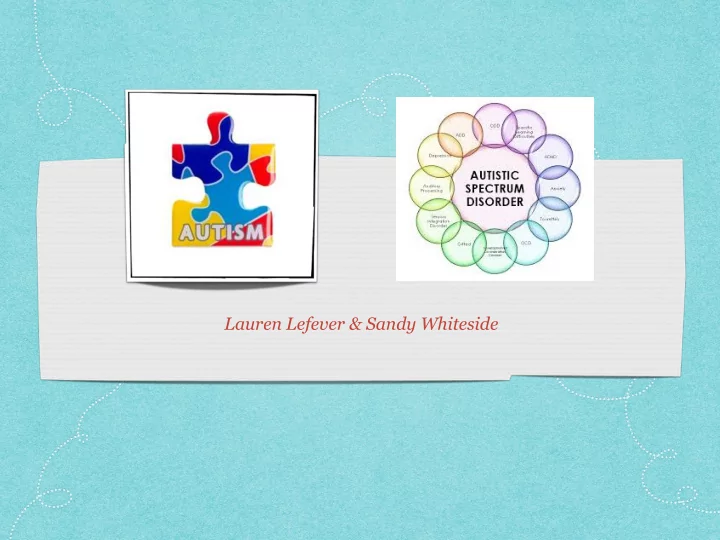

Lauren Lefever & Sandy Whiteside
Definition Autism spectrum disorder (ASD) and autism are both general terms for a group of complex disorders of brain development. These disorders are characterized, in varying degrees, by difficulties in social interaction, verbal and nonverbal communication and repetitive behaviors. With the May 2013 publication of the DSM-5 diagnostic manual, all autism disorders were merged into one umbrella diagnosis of ASD. Previously, they were recognized as distinct subtypes, including autistic disorder, childhood disintegrative disorder, pervasive developmental disorder-not otherwise specified (PDD-NOS) and Asperger syndrome.
Prevalence About 1 in 68 children has been identified with autism spectrum disorder (ASD) according to estimates from CDC's Autism and Developmental Disabilities Monitoring (ADDM) Network In 2000, this was about 1 in 150 children ASD is about 4.5 times more common among boys (1 in 42) than among girls (1 in 189) Autism appears to have its roots in very early brain development. However, the most obvious signs of Autism and symptoms of Autism tend to emerge between 2 and 3 years of age.
“If you’ve met one person with Autism, you’ve met one person with Autism.” Many of those on the autism spectrum have exceptional abilities in visual skills, music and academic skills. About 40 percent have average to above average intellectual abilities. Others with autism have significant disability and are unable to live independently. About one third of people with ASD are nonverbal but can learn to communicate using other means.
Recommend
More recommend